I’m excited to finally share that The Measured Mom and I are working together to share another teaching series. This time, we’re featuring a 10-week series called, Reading Comprehension Strategies. The purpose is to SHOW you, the parent, HOW to teach reading comprehension strategies to your child. If you’re a classroom teacher, we won’t leave you out either. There will be plenty of goodies for you as well!
If you’d like to visit the series that The Measured Mom and I have done together so far, you can visit these links:
- Preschool and Kindergarten Writing Lessons {10 weeks}
- Simple Writing Lessons for Primary Grades {12 weeks}
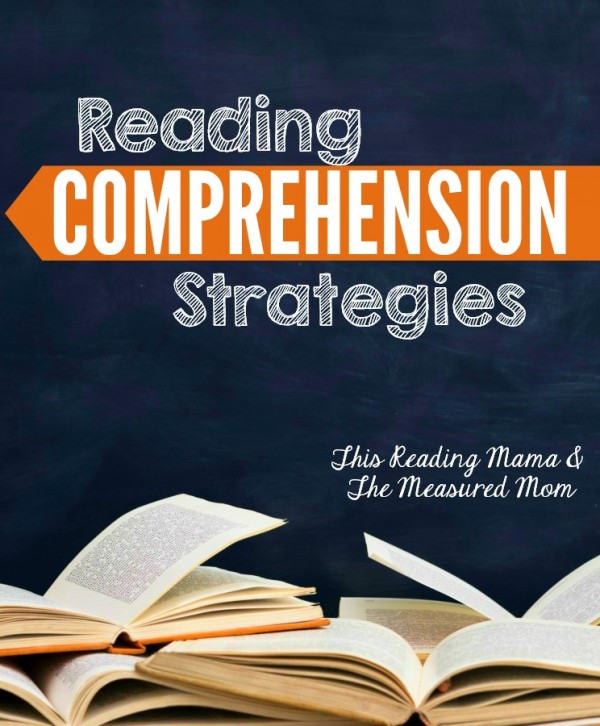
*This post contains affiliate links.
Why Teach Reading Comprehension?
Well, I have tons of reasons why, but here are my TOP THREE reasons reading comprehension strategies should be modeled and taught to ALL kinds of readers:
- Some kids tend to think reading equals saying the word correctly. Even advanced readers may think, “I’m a good reader because I know all the words in the book.” For some, comprehending what they’re reading isn’t even on their radar. But really, reading is two-fold. Recognizing the words accurately and quickly is only one part. Comprehension is the other piece. Readers also need to be able to UNDERSTAND, THINK ABOUT and MANIPULATE the text.
- Comprehension helps readers to engage with the text. We want our readers to be ACTIVE readers. This means they are interacting with the text by talking to themselves. Yes, good readers talk to themselves. They say things like, “I wonder why…” or “That’s happened to me before…” or “Wow, I didn’t see that one coming. So that means…” We want to encourage our readers to listen to the voices inside their heads while reading!
- Sooner or later, we all pick up something we just don’t understand. Even adults. Even advanced readers. If we don’t arm our readers with strategies they can use when the text is difficult, they may not know how to tackle the problem.
Teaching Reading Comprehension Strategies Isn’t “Enough”
You might be surprised to hear me say that teaching and modeling reading comprehension isn’t enough. Why not? First off, we want to give our readers SUPPORTED PRACTICE. This means that after we’ve modeled it, we give them easy text {text they can read by themselves or text you’ve already read together} so they can try out the strategy with our help. Instead of modeling it and then immediately setting them free to try it all alone, we need to guide them and their thinking through the text together until we can see that they are using the strategy with independence.
Secondly, {and you’re going to have to hang with me here}, we want them to practice the art of METACOGNITION. I know. I probably just lost you there. But all metacognition means is that you are thinking about your thinking.
Have you ever stopped to think about your thinking? Sure you have! Maybe you and a friend are having a conversation and something (s)he says makes you think of something else. As you change the subject, (s)he asks, “What in the world made you think of that?” You then have to stop and think about your thinking and retrace the steps of your thoughts to tell her how the two subjects are connected {at least in your mind}. That’s metacognition.
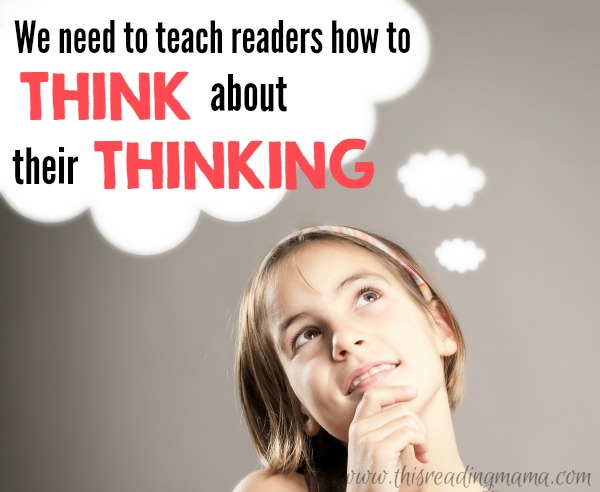
Metacognition is VITALLY important for all readers. Why? If we are having trouble with a text, thinking about our thinking helps us to see where our thinking got “off”. For example, you are reading a novel in a busy airport. All of a sudden, you realize that there’s a new character introduced in the book. But it doesn’t seem that the author has clarified who this person is or the relationship this person has with any other character. If you’re actively listening to and interacting with the thoughts in your head, you realize you need to go back and re-read a bit because you’re confused by this new character. Listening to that “Huh?!?” voice in your head helps you to clearly see that your thinking just jumped off- track.
Thinking about your thinking gives you an “attack” strategy for reading. You skim earlier pages, looking for the name. Then you find out that the author did introduce the character on the page before. Oh, but you were distracted by something that happened around you at the moment and weren’t really paying attention to what you were reading. Naturally, you go back and re-read the introduction of that character. Ah. Now, your thinking makes sense.
That’s all a part of the metacognition process. And the thing is, no one sees this process. It all happens in your head. Our young readers need to SEE, HEAR, and BE A PART this process. We need to let them in on the secret of metacognition; that yes, hearing voices inside your head as a reader is NORMAL. We must PAY ATTENTION to those voices as a reader.
10 Week Reading Comprehension Topics
These are the topics we will cover in this 10-week series. As each topic goes “live”, you will be able to click on the link to see the lesson in action.
- Week 1: Reading Comprehension Strategies Introduction {from This Reading Mama} Reading Comprehension Strategies Intro {The Measured Mom}
- Week 2: Teaching Readers to Use their Schema or Background Knowledge to Comprehend {This Reading Mama}
- Week 3: Making Connections to What You’re Reading {The Measured Mom}
- Week 4: Making Predictions Before and During Reading {This Reading Mama}
- Week 5: Making Inferences While Reading {The Measured Mom}
- Week 6: Visualizing – Thinking about the Pictures in Your Head {This Reading Mama}
- Week 7: Asking Questions {The Measured Mom}
- Week 8: Determining What is Important with Fiction {This Reading Mama}
- Week 9: Synthesizing: How Your Thinking Changes {The Measured Mom}
- Week 10: Summarizing with Basic Signal Words {This Reading Mama}
More About Reading Comprehension
If you’re ready to jump in and start learning about reading comprehension before we start, here are a few links you may enjoy. Each one of these links deals with comprehension, either directly or indirectly.
- 5 Ways to Improve Reading Comprehension {Sponsored by Snap! Learning}
- 50+ Books for Modeling Comprehension Strategies
- Reading Comprehension Strategies {Fix-Up Strategies}
- How to Ask Questions to Check Comprehension
- Reading Comprehension Strategies {Reading Equals Thinking}
- Understanding Nonfiction {Text Features & Text Structure}
- 5 Days of Teaching Text Structure
- Before They Read {Supporting Comprehension and Fluency Before Reading}
- Using Context to Teach Vocabulary
- Figurative Language Text Hunt
- How To Choose “Just Right” Books: Helping Kids Grow as Readers by Becky Spence
Follow This Reading Mama’s board Comprehension Strategies on Pinterest.
~Becky
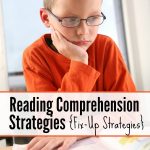

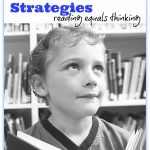
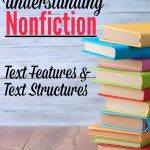
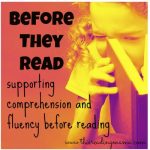
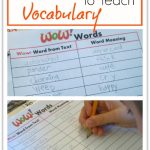

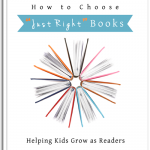
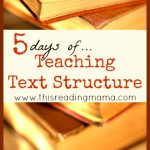
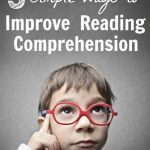
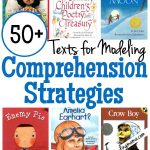
These are all fabulous ideas! Do you have a list of comprehension strategies that should be taught in upper elementary?
Hi Holly, The comprehension strategies in upper elementary are pretty much the same. I think that “Strategies that Work” by Stephanie Harvey would be a great book that shows how to use these same strategies in the upper grades. I also recommend delving a little deeper into text structures with upper grades–> https://thisreadingmama.com/teaching-text-structure-to-readers/. I highly recommend Emily Kissner’s book, which is mentioned in this series for teaching text structures to upper grades. I hope that helps.
Thank you SO much for sharing your wealth of knowledge on comprehension! I am soaking up every drop. I recently started to homeschool my 5th grader and I didn’t realize how far behind he was on reading and comprehension until now.
Maybe I missed it somewhere on your website. Do you have a template for lesson planning to get started? Obviously, each child is different so how long you spend on any given part will dependent on the child. Would you suggest maybe working on one at a time or two different aspects? Would you include structure and say text to self at the same time? Thanks!
No, I don’t have a template for lesson planning to get started on teaching comprehension. I typically begin one at a time and teach them generally in the order that you see from our comprehension series. But as we learn each new one, it’s fun to show them how they are connected to one another. For example, we have to use our background knowledge to predict or infer.
The time I spend on each one really depends on how quickly the child gets it. When working one-on-one with a child, that might take 2 weeks or a month, depending on the child.
Hope that helps some!
I’m an esl primary school teacher in Italy and I really appreciate all your tips and knowledge about teaching and your simple creative style.
Thanks so much. Always looking for material . . .
Thank u for the post. Could u plz provide the list of books to go over for each grade level for each strategy you follow.
I have this book list if that helps: https://thisreadingmama.com/modeling-comprehension-strategies-book-list/
Hi Becky……where are you doing your graduate program at? I am thinking about graduate studies in dyslexia as well.
Lisa
I’m taking online classes at Southern New Hampshire University. 🙂